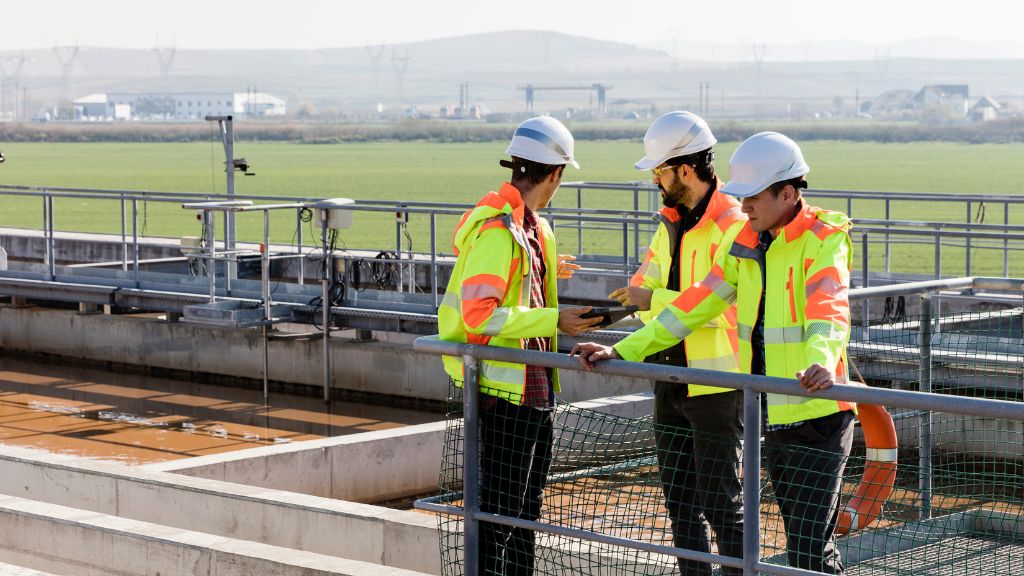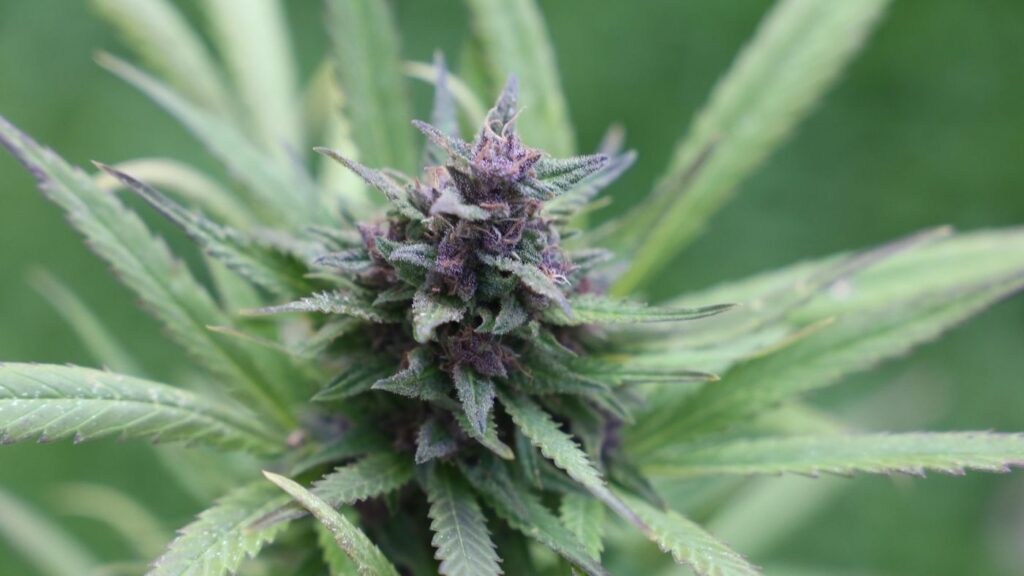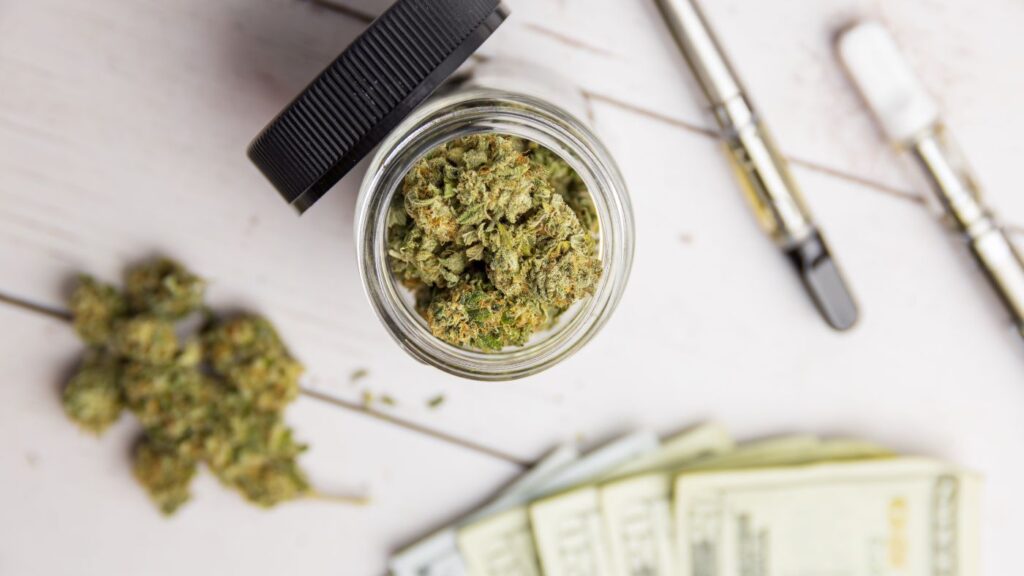Estimated reading time: 11 minutes
Table of contents
- Editor’s Note
- Water Usage in Cannabis Cultivation Facilities
- Irrigation Planning in a Cannabis Grow Facility
- Drainage and Wastewater Management
- Water-Efficiency Strategies for Cannabis Grow Facilities
- Final Considerations in Cannabis Grow Facility Design
- Cannabis Facility Water FAQs
- Additional Resources
- Free eBooks For Cannabis Business Success
- Latest Articles
Cliff Notes: Optimizing Water Use in Cannabis Grow Facility Design
Objective: Understanding best practices for water management in cannabis grow facility design and the essential role water plays in irrigation, climate control, and facility operations.
Key Components:
- Water is critical in cannabis cultivation—not just for irrigation, but also for climate control, humidification, processing, and facility operations.
- Precise irrigation planning involves collaboration between plumbing designers and cultivators to calculate daily water needs, choose appropriate delivery systems, and prevent waste.
- Water purification, especially reverse osmosis (RO), is essential for meeting strict cannabis testing standards and maintaining plant health, requiring proper sizing and temperature regulation.
- Fertigation systems blend nutrients into irrigation water and range from basic setups to automated solutions tailored to plant growth stages and room-specific needs.
- Drainage and wastewater management—including leachate collection and HVAC condensate reuse—reduces water waste and improves environmental sustainability.
- Efficiency strategies like drip irrigation, sensor-based watering, and reclaimed water reuse can significantly lower water usage and improve plant hydration accuracy.
- Early coordination with local utilities and Cannabis Consultants helps ensure the facility’s water infrastructure is scalable, compliant, and capable of supporting long-term operations.
Effective water management is fundamental to the success, compliance, and sustainability of any cannabis cultivation facility. By prioritizing precise irrigation planning, water purification, and recycling strategies—and by collaborating with Catalyst BC—operators can reduce costs, optimize plant health, and future-proof their operations against evolving regulatory and environmental demands. Contact us for a Complimentary Consultation.

Editor’s Note
This article is part three of the Cannabis Facility Design Essentials series. Find the additional parts below:
1. Cannabis Grow Facility Design: Essential Considerations for Success
2. Demystifying HVACD Systems for Cannabis Grow Facilities
3. Optimizing Water Use in Cannabis Grow Facility Design
4. Cannabis Facility Design Safety: Creating Compliant Environments
Indoor cannabis cultivation relies heavily on a consistent and high-quality water supply. From irrigation to climate control and facility maintenance, water plays a vital role in ensuring optimal plant growth and operational efficiency. Understanding the various uses of water in a cannabis grow facility and implementing sustainable strategies can enhance both productivity and resource efficiency. Many operators seek guidance from Cannabis Consulting experts to refine their water management practices and achieve better outcomes.
Water Usage in Cannabis Cultivation Facilities
A report titled Cannabis H2O: Water Use & Sustainability in Cultivation (2021) by the Resource Innovation Institute (RII), New Frontier Data, and the Berkeley Cannabis Research Center found that indoor cannabis cultivation facilities, on average, use 209 gallons of water per square foot annually for irrigation. While irrigation is the primary use, other key applications include:
- Evaporative Cooling Systems: Used in naturally ventilated greenhouses and water-cooled indoor grows, these systems require a steady water supply to replace moisture lost through evaporation.
- Humidification: Maintaining proper humidity levels in grow rooms, drying, and curing spaces is essential for plant health and post-harvest quality.
- Commercial Kitchen Operations: Water is used in food preparation areas for producing cannabis edibles.
- General Facility Needs: This includes employee amenities like restrooms, showers, and laundry facilities, as well as emergency eyewash stations and cleaning operations.
Many cultivators rely on a Cannabis Consultant to help analyze water usage data and identify opportunities for improvement.
Irrigation Planning in a Cannabis Grow Facility
Determining Water Requirements
The most critical aspect of water use in a grow facility is irrigation. Calculating the correct amount of water needed involves collaboration between plumbing designers and cultivation experts. Factors such as water quality, delivery methods, frequency, and volume are considered.
Watering rates are often measured in:
- Gallons per plant per day
- Gallons per square foot of plant canopy per day
Once daily irrigation requirements are established, the appropriate equipment can be selected and sized. Many growers engage Cannabis Consulting services to ensure their irrigation systems are both efficient and sustainable.
Filtration and Purification
Reverse osmosis (RO) is a widely used method in cannabis cultivation to remove contaminants, including sodium and heavy metals, which can be detrimental to plant health. Given the stringent testing requirements for cannabis products, growers prioritize water purity.
Key considerations for RO systems include:
- Sizing to meet daily facility needs
- Storage tanks holding at least one day’s worth of water to prevent operational disruptions
- Pre-heating water to room temperature to optimize RO efficiency and prevent plant shock from cold water
A seasoned Cannabis Consultant can provide valuable insights into selecting and sizing RO systems to maximize water purity and operational efficiency.
Fertigation System Design
Fertigation—integrating nutrients into irrigation water—requires careful planning. RO-treated water is pumped to nutrient mixing stations, creating enriched irrigation water stored in batch tanks or distributed directly to grow rooms.
- Each grow room may have a custom nutrient mix, depending on the plant growth stage.
- Watering zones are controlled by solenoid valves, with each plant receiving water via drip irrigation.
- Automated schedules or soil moisture sensors regulate watering events.
Fertigation systems can range from basic manual setups to fully automated, skid-mounted systems with integrated pumps and controllers. Many facility designers turn to Cannabis Consulting for advice on optimizing fertigation for enhanced plant growth.
Drainage and Wastewater Management
Handling Leachate (Excess Water Runoff)
Runoff from irrigation, known as leachate, must be carefully managed to avoid waste and potential contamination.
- Moveable benches and racks with built-in drainage systems help collect and direct runoff.
- Floor and trench drains capture excess water, directing it to a sump or reclamation system.
- Some facilities explore leachate recycling, but this is typically more viable for larger operations.
Consulting with a Cannabis Consultant can provide strategies for effective leachate management and recycling, enhancing water sustainability.
HVAC Condensate Collection
A significant portion of irrigation water is released back into the environment through evapotranspiration. Plants exhale moisture, which is then captured by heating, ventilation, air conditioning, and dehumidification (HVACD) systems.
- 80–95% of irrigation water is transpired by plants and condensed by HVACD systems.
- Condensate can be reclaimed, filtered, and reused to reduce fresh water consumption.
- In cold climates, outdoor condensate drains require freeze protection to prevent blockages.
Municipal vs. Onsite Wastewater Treatment
- Facilities connected to municipal sewer systems must confirm that wastewater can be accepted without additional pretreatment.
- If relying on a septic system, the impact of RO backwash and nutrient runoff must be evaluated to prevent system overload.
A knowledgeable Cannabis Consultant can help facility owners determine the best wastewater management approach based on local conditions.
Water-Efficiency Strategies for Cannabis Grow Facilities
Drip Irrigation & Sensor-Based Controls
- Drip irrigation can reduce water usage by 30–70% while increasing water efficiency by 20–90%.
- Sensor-controlled watering minimizes excess irrigation and optimizes plant hydration.
Reclaiming Water from HVACD Systems
- Reusing captured condensate reduces the demand for fresh water.
- RO treatment of reclaimed water ensures purity before reintroducing it into the irrigation system.
Leachate Recycling Considerations
- Recycling runoff can be costly for smaller operations but feasible for large-scale facilities.
- If chemical cleaning solutions are used between crop cycles, additional filtration is needed before leachate is reused.
Facility Water Service Sizing
A facility’s water supply must be adequately sized to meet irrigation and cooling system needs. Early engagement with local water utilities is critical. Many facility owners benefit from working with a Cannabis Consultant to ensure that water supply planning is optimized for both efficiency and regulatory compliance.
Engaging Local Water Utilities Early
Unexpected limitations in municipal water supply can impact facility operations. Early engagement with utility providers ensures that:
- Water quality meets cultivation standards.
- The facility has adequate water pressure and supply capacity.
- Alternative solutions (such as onsite water storage) can be planned if needed.
Final Considerations in Cannabis Grow Facility Design
Effective water management is fundamental to the success, compliance, and sustainability of any cannabis cultivation facility. By prioritizing precise irrigation planning, water purification, and recycling strategies—and by collaborating with Catalyst BC—operators can reduce costs, optimize plant health, and future-proof their operations against evolving regulatory and environmental demands. Contact us for a Complimentary Consultation.
Cannabis Facility Water FAQs
On average, indoor cannabis grow facilities use approximately 209 gallons of water per square foot annually for irrigation alone. This figure may increase with additional water usage for HVACD systems and facility maintenance. Many operators consult with a Cannabis Consulting firm to benchmark their water use.
The ideal water source depends on local availability and quality. Many cultivators rely on municipal water, well water, or rainwater collection, often treated with RO filtration. Expert advice from a Cannabis Consultant can help determine the optimal water source for your facility.
Cultivators can implement water-efficient irrigation solutions like drip irrigation, sensor-based watering, and leachate recycling. Additionally, reclaiming HVACD condensate water and reusing filtered runoff can significantly reduce freshwater consumption in indoor grow operations.
Water is crucial for HVACD systems in cannabis cultivation, particularly in evaporative cooling, humidification, and condensate management. Water-cooled HVAC systems and dehumidification units recycle plant transpiration moisture, helping to regulate temperature and humidity levels efficiently.
Yes, wastewater from a cannabis facility water system can be treated and reused through filtration, UV sterilization, and chemical balancing. Many large-scale cultivators invest in water recycling systems to reclaim irrigation runoff and HVACD condensate, minimizing water waste.
Fertigation is the process of injecting nutrients into irrigation water, enhancing water efficiency and optimizing plant growth. Many facility operators consult with a Cannabis Consultant to design effective fertigation systems.
Reverse osmosis (RO) systems remove salts, heavy metals, and contaminants that could negatively affect plant health. RO water is often preferred because it provides a neutral starting point for nutrient mixing, ensuring that growers have full control over water chemistry for optimal plant growth.
Cannabis growers can enhance water sustainability by monitoring water usage benchmarks to track efficiency and reduce waste, implementing rainwater harvesting for non-irrigation uses, using closed-loop irrigation systems to recycle nutrient-rich runoff, and integrating smart irrigation controllers that adjust watering based on real-time plant needs.
A facility’s geographic location directly impacts water usage and irrigation planning. In arid regions, cultivators may require additional humidification systems, while humid climates might demand more dehumidification and condensate management. Seasonal changes also influence water consumption in controlled environment agriculture.
Drip irrigation reduces water waste, prevents excessive humidity buildup, and delivers water directly to the root zone, improving absorption. Many cultivators seek advice from Cannabis Consulting firms to implement efficient drip irrigation systems.
Cannabis growers must work closely with local water utilities and regulatory agencies to ensure compliance with wastewater discharge limits, water usage permits, and environmental impact requirements. Implementing sustainable water management practices can help reduce regulatory risks while improving overall facility efficiency.
Water quality directly affects nutrient uptake, root development, and overall plant growth. High levels of chlorine, sodium, or heavy metals can lead to nutrient lockout, stunted growth, or contamination issues. Using reverse osmosis (RO) filtration or activated carbon filters helps ensure water purity for optimal cultivation.
A well-designed cannabis facility water system should consider automation and monitoring tools to optimize water efficiency, water demand per plant and total facility usage, filtration and purification needs, such as RO systems, and Irrigation methods, like drip systems or flood trays.
HVACD systems capture water vapor from plant transpiration, which can be filtered and reused in irrigation. Many cultivators implement condensate reclamation strategies with advice from Cannabis Consulting experts.
Common wastewater management challenges in cannabis facilities include preventing contamination of municipal water supplies or septic systems, high nutrient concentrations in irrigation runoff, RO system waste disposal, which can increase total water use, and compliance with local wastewater discharge regulations.
Additional Resources
Free eBooks For Cannabis Business Success
Latest Articles
- Utah Medical Cannabis Pharmacy License Applications Open for 2025: Eligibility, Deadlines, and RequirementsThe Utah Department of Agriculture and Food (UDAF) has officially launched the first application period for two independent medical cannabis pharmacy licenses, running from July 1 through July 31, 2025. Originating from House Bill 54, passed during Utah’s 2025 legislative session, these new pharmacy licenses aim to broaden medical cannabis access in medically underserved areas across the state.
- Cannabis Startup Costs: From Licensing to ProfitabilityStarting a legal cannabis business isn’t just about getting a license—it’s about building a profitable, compliant, and sustainable operation in one of the world’s most capital-intensive and regulated industries. Many entrepreneurs enter this space with many goals, good intentions, and passion, but ultimately fail because they underestimate the cost, complexity, experience, and time required to turn a cannabis license into a thriving business.
- Cannabis License Pitfalls: How to Avoid Common Cannabis Licensing MistakesAs new adult-use programs launch, many entrepreneurs are eager to start growing, processing, or selling cannabis. Excitement runs high, but the industry’s heavy regulations and complex operations can quickly overwhelm even experienced business owners. Common mistakes include underestimating compliance requirements, rushing facility design, skipping proper procedures, and more.
- Maximizing Your Minnesota Cannabis Microbusiness or Mezzobusiness LicenseMinnesota’s new adult-use cannabis law allows microbusinesses (one store, up to 5,000 sq ft indoor, ½ acre outdoor) and mezzobusinesses (up to 3 stores, 15,000 sq ft indoor, 1 acre outdoor) to cultivate, manufacture, sell, and transport cannabis under one license. These vertically integrated licenses offer flexibility, but also come with complex state rules.
- The Recipe for a Top-Tier Cannabis DispensaryOperating a highly reviewed, top-performing cannabis dispensary takes more than simply stocking product and unlocking the doors. It requires operational discipline, regulatory expertise, top-tier customer service, dynamic merchandising, and a culture of accountability and community. With the cannabis industry continuing to expand—and regulations constantly evolving—success is defined by how seamlessly a dispensary integrates compliance, product curation, staff training, and marketing into day-to-day operations.
- Minnesota Lottery Results: June 5 Cannabis License Drawings and What’s NextThe Minnesota Lottery for cannabis business licenses reached a pivotal milestone on June 5, as the Office of Cannabis Management (OCM) conducted randomized drawings for select license types. These lotteries were open to both social equity applicants and general applicants vying for limited licenses to operate as cultivators, manufacturers, and mezzobusinesses. Additionally, a separate lottery was held exclusively for social equity applicants seeking a retail cannabis license.











